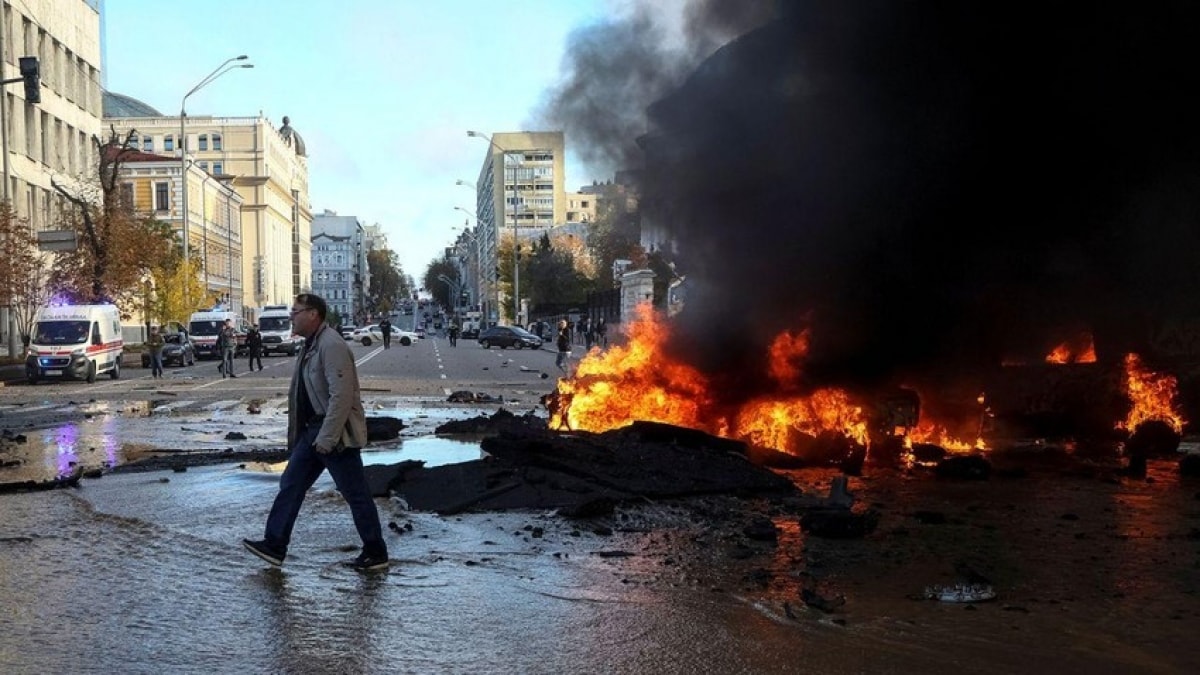How quickly can Russia rebuild its tank force?
Overall, the Russian armed forces' need for tanks in the conflict with Ukraine is 10 times greater than its production capacity, a Western official said.
During World War II, Nazi Germany destroyed Soviet tanks at an unprecedented rate. Yet, although the Red Army lost 80,000 tanks, the Soviet Union's industrial might allowed it to end the war with more tanks than it had at the start.
 |
A convoy of Russian tanks and armored vehicles in Mariupol, Ukraine. Photo: Reuters |
Today’s tanks are much more complex and expensive, so they are deployed in significantly fewer numbers. However, Russia is believed to have lost a large number of tanks in its conflict with Ukraine. Kiev’s forces claim to have destroyed more than 3,250 enemy tanks, while Oryx, an open-source intelligence blog, puts Russia’s losses at 1,700. The International Institute for Strategic Studies estimates that about half of Russia’s pre-conflict T-72 fleet, estimated at 2,000 and representing the bulk of its tank force, has been destroyed.
While tanks do not provide Russia with a distinct advantage in a particular military campaign in a neighboring country, its soldiers would struggle to carry out a major offensive without adequate support from them, according to The Economist magazine.
Kiev has begun receiving battle tanks from Western allies in recent weeks and may use them for a spring offensive. Moscow will need to bolster its tank force if it is to hold the territory it has gained control of. The question is how quickly it can replace the tanks it has lost.
In the 1940s, Soviet factories could produce more than 1,000 tanks per month. Factories specializing in tractors and railway engines were also ordered to build tanks for the Red Army.
Increasing production is harder today. The electronics in modern tanks, which enable night vision, gun aiming and a host of other features, are complex. That slows down production and prevents many factories designed for other types of production from being easily repurposed for tank production.
Russia now has only one tank factory left: UralVagonZavod, a massive complex built in the 1930s. But financial mismanagement and huge debts have slowed the factory’s modernization. Workers joke that they are assembling tanks by hand. According to the Russian newspaper Novaya Gazeta, the factory builds just 20 tanks a month.
A Western official assessed that, in general, the demand for tanks of the Russian armed forces is 10 times greater than production capacity.
In an effort to meet demand, Russia has accelerated the recovery of older tanks, which have thousands in storage. In Ukraine, modern Russian tanks such as the T-90 are fighting alongside large numbers of T-72b3s, models built decades ago but upgraded with guns, reactive armor (which reduces the chance of a tank being hit) and digital communications systems. Even with these improvements, the older tanks are still inferior to newer models and less able to withstand attacks from Ukrainian forces. But they are still useful.
According to Russian media, UralVagonZavod is repairing about eight tanks a month, while three other armored vehicle repair plants are helping to refurbish about 17 tanks a month each. Two more plants of similar size will be put into operation in the next few months.
This means that while Russia can only build 20 new tanks per month, it could soon be able to recover 90 or more per month from its factories. But that will not make up for the estimated 150 tanks it is losing each month, according to Oryx’s analysis. In addition, production could be hampered by a severe shortage of components such as advanced tank control microprocessors due to a series of sanctions imposed by the US and its allies.
Moscow is even using microprocessors from imported dishwashers and refrigerators for military hardware, the European Commission claims. Some new tanks refurbished for the Ukraine campaign contain a mix of hardware from different models and lack high-tech equipment such as wind speed sensors that help with accurate firing.
But Russia is not alone in its problems. Ukraine and its allies also lack the ability to produce tanks quickly. Ukraine’s only tank factory, near Kharkiv, was destroyed early in the conflict with Russia. The United States, which has promised Kiev 31 M1A2 Abrams tanks, has a factory capable of producing 15 tanks a month.
Production in the West was similarly slow, leading to a frantic search for used tanks to aid Kiev. But overall, the attackers still used more tanks than the defenders.
Observers are still waiting to see how Russia will utilize and develop its tank force in the ongoing conflict across the border.

Russia attacks Ukraine's intelligence center near the capital Kiev
28/02/2023
